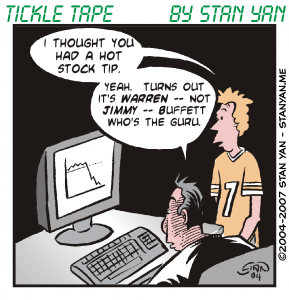In his study of genetic influences on height, Sir Francis Galton compared the height of fathers to the height of their sons. He reasoned that if height did have a genetic basis, fathers’ height should predict sons’ height. It didn’t. Indeed, taller fathers had shorter songs and shorter fathers had taller sons. The relation was far from perfect. Galton then made a gross logical error.
He concluded that over the generations, taller people would get shorter and shorter people would get taller and that a process would occur where height “regresses toward the mediocrity.” In his analysis, he forgot to account for the fact that mothers’ play an equally important role in determining the height of their children. Men with a tall gene may not marry a woman who also has a tall gene, and thus, the correspondence between parents’ and children’s height is a matter of chance. Despite Galton’s logical error, we are stuck with this term “regression toward the mean,” a misnomer.
The term is a statistical concept that refers to how points are spread around a linear regression line, specifically, how well predicted values based on the equation for the line match the actual values on which the line was derived. How does this all relate to trading stocks? You tell me. “Mean reversion” is a common term in the trading literature. It refers to the idea that when a stock is extremely high (or low), it will “revert” back to a lower value, which is closer to the mean level for the stock. This is a fascinating concept, and we can’t cover it completely here today, but mean reversion is an interesting mix of statistics and market psychology.
Another way to view mean reversion is as a “failure to meet expectations.” According to statistical theory, a regression line is used to make predictions, and thus, we can view the line as making a prediction about our expectations. Consider a simple equation that predicts total weekly sales from the number of cold sales calls made during the week.
Because not all cold calls result in a sale, the relation between the predictor and criterion variables is imperfect, and thus, the number of sales calls made under-estimates the number of weekly sales. In other words, if we relied on the line to predict how much income we would make, we would fail to meet our expectations. Similarly, if we try to theoretically use a regression line to predict the price of a stock from a one-time point to the next, our prediction would be imprecise.
The stock price from one-time point to the next does not correspond perfectly. Well, for the concept of mean reversion to even be relevant here, it better not be consistent from one-time point to the next. Three assumptions are made when using regression toward the mean to understand stock prices: (1) the “true” value of the stock is exactly the same between point A and point B, (2) the current posted price is not an accurate reflection of the “true” value of the stock, and (3) the discrepancy between the posted price at point A and point B is entirely due to random factors.
Some of these assumptions are often met. First, stocks tend to be based on mass psychology, or opinion, which may fluctuate randomly. The masses decide the value, rather than the fundamentals of the company, especially in the relatively short timeframe in which we trade. The actual value probably doesn’t’ really change. So the first two assumptions seem to hold. But is the posted price discrepancy between point A and point B completely due to random factors? It seems to depend. The prices of stocks are somewhat based on the fundamentals of the company, which may not or may not change.
It is also possible for popular opinion to change over the long term. To the extent that either of these factors accounts for the change in price between point A and point B, mean reversion will not occur. For example, if a company starts making huge earnings and sustains it, both the fundamentals of the company and popular opinion of the company will change between point A and point B. The change in the observed price is not purely random, and thus, one should not anticipate the price falling back down to previous “mean” levels. So one shouldn’t expect mean reversion to occur without fail.
That said, however, it does appear that many times mean reversion is pertinent. For example, a stock price often rises artificially due to poor information, which is a “random” effect. Also, during a given time point, the masses may become “elated” and this may reflect a random change in mood that may dissipate over time, and the “true” value of the stock will shine through and “revert back to normal.” Mean reversion is a fascinating concept. In the end, it is merely a mathematical concept, but it applies because market participants are human, and human decision making is fraught with random errors, regression effects operate in the markets.


